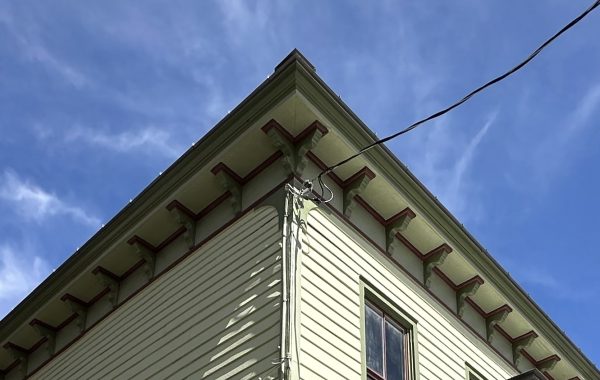Yesterday, I wrote about the effects of delayed maintenance on small and relatively poor religious institutions with historic buildings. Today, I want to look at the other end of the spectrum: the recent fire at Notre Dame de Paris. Marie’s comments from April are still true, as I suspect they always will be. I recently read “Churches and States” by Richard Wittman, which compares the situation at Notre Dame with the reconstruction of San Paolo fuori le mura in Rome in the 1800s; the comparison goes beyond the reconstruction of a famous and beloved church after a preventable fire to the politics of architectural design in the new work.
The fire at Notre Dame left intact most of the vaulting – the ceiling of the main sanctuary space – while completely destroying the roof and crossing spire. Preservation logic here agrees with ordinary logic: since the sanctuary was not so badly damaged, it should simply be repaired. Preservation logic, as well as a number of international agreements on the topic, also says that the roof should be rebuilt as it was before the fire, but let’s say for the sake of argument that doesn’t have to be so, given that the roof is completely gone. What should be done?
A glass roof strikes me as an odd solution. Unless the historic vaulting is removed, the glass will change nothing in the sanctuary; allowing visitors to the attic of the new roof greenhouse would require access (elevators, fire egress) and services (mechanical heating, cooling, and ventilation, unless the glass panels are operable, which would lead to an extremely odd outside appearance) that would either require altering the historic material below the attic or adding some kind of modern service core on the outside. Either way, this option is the definition of intrusive.
If there is no access to the attic, then the use of glass is a sculptural statement, like some of the proposals to replace the roof with opaque modern forms. As I have said before, I’m neither an architect nor an architectural critic, but the question that arises is “why?” You can make your architectural or social statement anywhere, so why make it at a building with 800 years and an entire society’s worth of history? Or maybe, if you feel that your statement is best made on top of 800 years and an entire society’s history, you should examine your belief that social commentary is a zero-sum game, so that the best way to make your beliefs public is to damage someone else’s.
Given the rendering software available now, anyone who wants to design their own project at Notre Dame can do so and then create photo-realistic images of it. I suspect that will be a staple of college design studios for years to come. That’s not the same as having one’s work built at an internationally-famous monument, but it’s a lot less intrusive and, arguably, more democratic.



